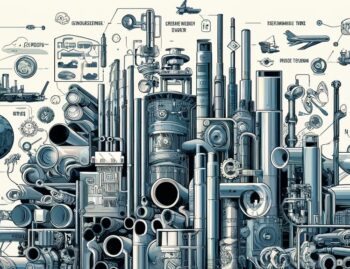
President Trump has announced that he will lift steel and aluminum tariffs on Canada and Mexico. This decision was reached in an effort to pass the United States Mexico Canada Agreement, an update to the North American Free Trade Agreement.
In return, Canada will remove the tariffs they placed on American goods as a reaction to last year’s imposed steel tariffs.
The steel tariffs were a major matter of contention. Many people argued that it would harm the American economy, while others believed it would benefit steel manufacturers.
What this means for the future
The ramifications of this latest development are unclear. While some industry experts suggest this could be the end of universal steel tariffs, the Trump administration insists they intend to keep tariffs on other countries.
However, President Trump recently cut steel tariffs on Turkey by half as well.
“This target level, if maintained for an appropriate period, will improve the financial viability of the domestic steel industry over the long term,” Trump said.
Since August, Turkey and the U.S. have been locked in a trade war. This latest development aims to remedy tensions, while also benefiting the domestic steel market.
Chinese steel remains a threat in the eyes of the Trump Administration, however, with those tariffs intended to remain in place.
Latest impacts of tariffs
As predicted, last year’s steel tariffs have led to an auto recession. Automotive demand has significantly weakened, particularly in Europe, over the last quarter.
This is as a result of the higher automobile costs that are resulting from limited steel supply influx. ArcelorMittal predicts that the European steel market will suffer as demand lessens and car manufacturers struggle with cheap imports.
In China, however, demand is expected to increase.
With the automotive industry accounting for 20% of global steel demand, it’s no surprise European steelmakers are suffering. They’re also dealing with a surplus of imported steel from other regions, about 13% in comparison to a 3.3% demand.
Steel experts suggest this is a result of U.S. steel shipments that had to be rerouted as a result of last year’s tariff implementation. As the U.S. begins to loosen its reigns, such as it has with Canada, Mexico, and Turkey, many hope this will improve the global steel outlook.
Chinese steel performance
Tensions between the U.S. and China remain, however, with stocks sliding into the red as trade talks get stalled. Last week, the U.S. hiked up tariffs on $200 billion worth of Chinese goods. Meanwhile, China reciprocated by imposing higher levies on $60 billion worth of U.S. goods.
Chinese steel production is also on the rise, with it reaching a record rate of 85 million tons in April.
However, India worries that the U.S.-China trade war could instigate further repercussions. Specifically, they think China could start flooding excess steel into the Indian market. This is as a result of the raised tariffs imposed on Chinese products.
Although India is the world’s second largest steel producer, and China continues to dominate the market, the quality of American steel remains unmatched. Domestic steel manufacturers are hoping this fact will speak for itself in the trade agreements, and that a timely and fair decision is soon reached.











